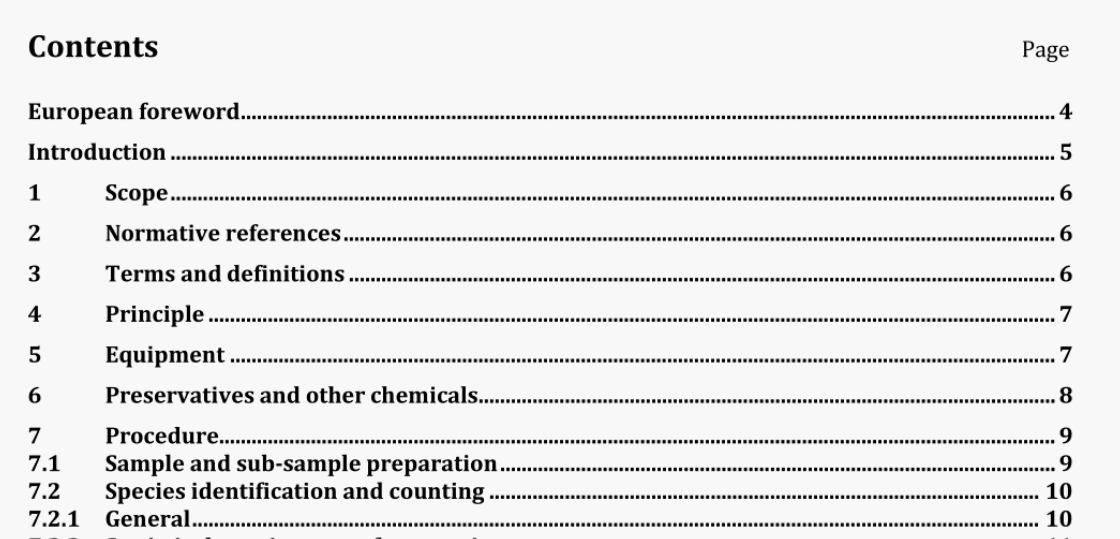BS EN 17204:2019 pdf download.Water quality – Guidance on analysis of mesozoopl ankton from marine and brackish waters
1 Scope
This document specifies a procedure for analysing mesozooplankton in marine and brackish waters.The procedure comprises how to identify and enumerate mesozooplankton to estimate quantitative information on diversity, abundance and biomass with regard to spatial distribution and long-term temporal trends for a given body of water.
2 Normative references
The following documents are referred to in the text in such a way that some or all of their content constitutes requirements of this document. For dated references, only the edition cited applies. For undated references, the latest edition of the referenced document (including any amendments) applies.
EN 17218:2019,Water quality 一Guidance for the sampling of mesozooplankton from marine and brackish waters using mesh
3 Terms and definitions
For the purposes of this document, the following terms and definitions apply.
ISO and IEC maintain terminological databases for use in standardization at the following addresses:
-IEC Electropedia: available at http:/ /www.electropedia.org/
-ISO Online browsing platform: available at http:/ /www.iso.org/ obp
7 Procedure
7.1 Sample and sub-sample preparation
For sampling and storage of zooplankton samples from marine waters, see EN 17218:2019. All samples should be retained in storage until the subsequent investigation is completed. To remove the formaldehyde from the sample before the microscopic investigation the sample should be filtered through a sieve and rinsed with filtered or sieved tap water. The mesh size of the sieves shall be considerably smaller than the mesh size of the plankton net used for sampling. All activities should occur under a fume hood to deflect the formaldehyde fume. The formaldehyde should be collected in the sample vessel and reused to preserve the zooplankton organisms after completion of the microscopic analysis. The zooplankton should be transferred under careful rinsing from the sieve with filtered tap water into a glass vessel and refilled to a certain volume depending of the density of organisms. The whole zooplankton sample should be filled in a counting chamber or divided in case organisms are too densely concentrated. Depending on the splitting device, the sample should be concentrated by sieving or diluted with tap water as necessary. Before flling the splitter the volume of the total sample shall be measured in a graduated glass or plastic cylinder. The volume shall be noted in the protocol. If the sample contains large clumps of plankton [e.g. by gelatinous organisms or Cercopagis) or macroalgae, these shall be carefully removed and placed on a very large mesh. The clump should be gently rinsed with water or seawater while pulling at the clumps with forceps to free trapped organisms, which are returned to the sample before splitting or analysis. All the organisms still attached to the clump shall be identified, counted and recorded. To divide the sample into defined subsamples a calibrated Plunger sampling pipette according to Hensen, a Folsom plankton sample divider (splits into two subsamples)
BS EN 17204:2019 pdf download
